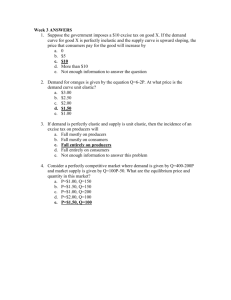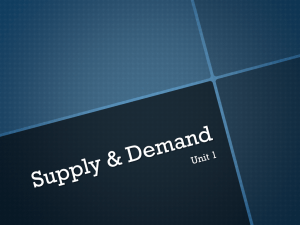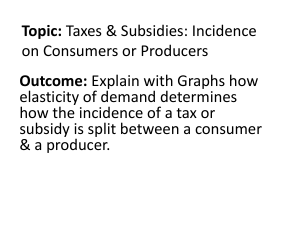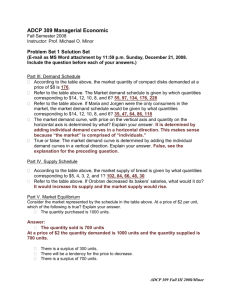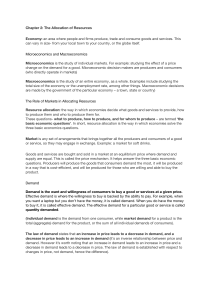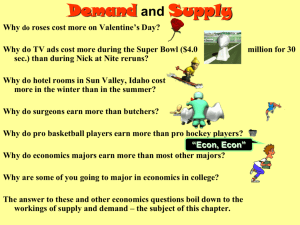Unit 1 Economics
advertisement
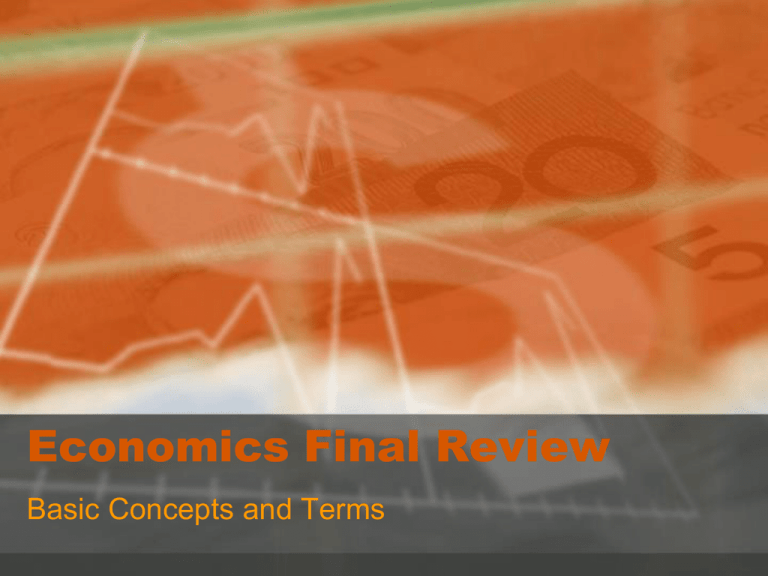
Economics Final Review Basic Concepts and Terms Identify entrepreneur. • Willing to take risk • Looking for financial gain • Creates a new business or product or improves an existing one Define scarcity • fundamental condition of economics that results from the combination of unlimited wants and limited resources. Identify the three questions of production. • What • How • For Whom Identify benefits of interdependence • specialize • efficiency • Access to unavailable or limited resources Identify the following descriptions as either macro or micro economics • • • • • • • • Assessing the natural resources available on the island _____MACRO_________________ Sun deciding what to grow in her garden ____MICRO____________________ Comparing the amount of food produced by Jin and John _______MACRO________________ Sawyer taking an inventory of his suitcase supplies __________MICRO______________ What do the points on a production possibility curve represent? • Possible combinations of two products Fish Caught v Hours Taught What do points on the inside and outside of a possibility curve indicate? • Inside – inefficiency • Outside – impossibility Fish Caught Hours Taught What does a possibility curve assume? • Resources are used efficiently and don’t change Fish Caught Hours Taught Identify the three factors that determine value. • desirability • scarcity • utility Identify the three systems of exchange • barter • money • credit Identify three ways businesses try to increase efficiency. • Division of labor • Specialization • Allocation of resources The next best choice you can make describes? • Opportunity Cost Investing in education, training, morals, values, health and skills are examples of? • Human capital To focus on one area of production is an example of: • specialization Command • Model economic systems in which production questions are decided by the government. Command • Resources are owned by the government in this model system. Traditional • Tribes like Mbuti, Navajo, the Amish and Intuits of Alaska would belong to this model economic system. Market • In this model economic system individuals make decisions about what, how, and for whom to produce. Market In this model economy factors of production are owned by individuals Identify the five features of the U.S. free enterprise system. 1. Private property & contracts 2. Individual choice 3. competition 4. Self-interest & voluntary exchange 5. Limited government Voluntary Exchange • The unconditional and mutually beneficial transfer of products between producers and consumers Self-interest • Adam Smith’s theory: The impulse that encourages people to satisfy their wants and needs which consequently benefits society. Money loaned to a business or the government for a moderate, fixed rate of return, but with little liquidity. • bond The idea that money is worth more now than it will be in the future. • Present value 1990 1990 2010 / less $ 2010 / more $ A share of ownership in a corporation • Stock The purchase of something of value with the expectation that over time it will increase in value and produce a profit • investment Whether an investment is easy to sell, how quickly you can access your money. • Liquidity Buying a number of investments to reduce risk and to balance out the high and low performers • Diversification Identify eight different types of investments • • • • • • • • Savings account Money market Certificate of deposit Bond Blue-chip stock Growth stock Real estate Commodities / Precious metals, oil, crops, etc. Identify the four things to consider when making an investment. • • • • rate of return risk/ diversification liquidity tax benefit. compound interest • money earned on a sum of money that is invested plus the interest paid on that money over time. capitalist In which mixed economy does the Individual have the most freedom? Democratic socialist In which mixed economy does the government own key industries? Authoritarian socialist or communist In which mixed economic system does the government control resources? Identify the three economic actors in the U.S. free enterprise system. 1. Consumers 2. Producers 3. Government Circular Flow Model 1. visually demonstrates the flow of resources, products (goods and services) and money payments between the economic actors. Income Effect • Any increase or decrease in consumers’ purchasing power caused by a change in price Law of Demand • The inverse relationship in which consumers will buy more of a product at a lower price and less of a product at a higher price. Demand Schedule • A list which shows the relationship between the price of a good or service and the quantity that consumers demand. Demand Curve • A graph reflecting the relationship between the price of a good or service and the quantity that consumers demand Elastic demand • Exists when a small change in a good’s price has a large impact on the quantity demanded Inelastic demand • When a change in price has little impact on quantity demanded Law of supply • The idea that producers will supply more product at higher prices and less product at lower prices. supply • All of the product a company makes at various prices in a given period of time Market equilibrium • The price at which both producers and consumers are satisfied. The term that refers to the tendency of consumers to buy products of similar quality at a lower price? Substitution effect The concept which states that as more units of a product are consumed, the satisfaction from consuming each additional unit decrease is called? diminishing marginal utility A demand curve only displays a “snapshot” of a market because… Demand changes over time The two conditions which make up demand • Willing & able • Specific time period Three things that can affect the demand for a product are: 1. Income effect 2. Substitution effect 3. Diminishing marginal utlity What are the three qualities of elastic demand? 1. necessity 2. substitutes 3. cost Two things that can affect the supply for a product are: 1. Profit motive 2. Market trends What are the qualities of elastic supply? • time • money • Availability of resources Examples: Elastic: sports memorabilia, paper clips, toys, Inelastic: gold, oil, nuclear weapons Why do Governments set prices? • Minimize supply and demand swings • To balance inequalities in the market place. • To address unaccounted for costs like pollution. price ceiling • maximum price for a product • Can cause shortages • Rent control is an example price floor • It is a minimum price for a product. • can cause a surplus • Minimum wage is an example


